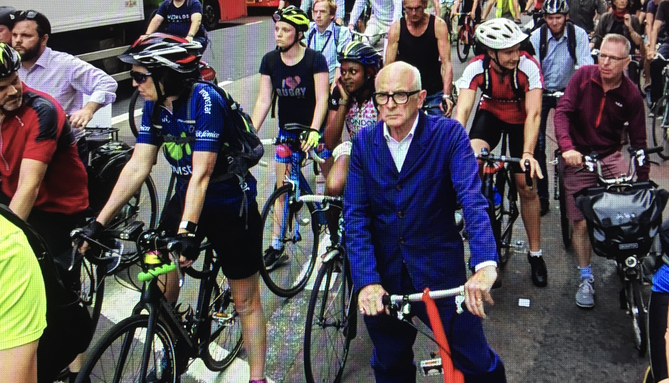|
On Saturday 24 April 1993 at 9.17am, the City of London Police received a coded warning from the South Armagh Brigade of the IRA. Just over an hour later a bomb in a tipper truck parked in Bishopsgate and loaded with almost a ton of fertiliser was detonated, destroying adjacent buildings and severely damaging many others within a 500m radius. The cost of building repairs was estimated at £1billion.
The IRA bombing campaign set in train a series of events that led to an equally dramatic but more benign change in the architecture of the Square Mile - the rise of the Eastern Cluster. The close-kissing towers, still growing on the City skyline - once dominated by Wren’s 51 church spires - have multiplied ever since Foster and Partners received planning permission for 30 St Mary Axe in 2000 on a site made vacant by the 1992 Baltic Exchange bomb. One of the victims of the IRA was the Leatherseller’s Livery Company Hall in St Helen’s Place, set behind a neoclassical facade built in the early 1900s. As the ancient Company, which dates back to 1444, contemplated restoration, it became clear that surrounding sites of which it held the freehold were ripe for development. The Square Mile was booming and the City Corporation was keen to densify office space. As then Planning Chief Peter Rees said, “if we can’t build out we must build up.” The outcome was that the Leathersellers did a very advantageous deal with Brookfield Properties whereby the developer would build the 40 storey 100 Bishopsgate Tower next to the site of the old hall and the proceeds would fund a new one - no expense spared. Instead of building up, Eric Parry designed a building that goes down. Behind the refurbished facades of Helen’s Place, the above-ground floors have been allocated to income-generating office space while a grand ground floor reception space, with views out to the medieval walls of St Helen’s Bishopsgate, leads to a sweeping, processional stair down to the Company’s dining hall. The curved walls are lined with shrunken bull shoulder with a two-tone effect developed by leather designer Bill Amberg, to match the vitreous enamel on the building’s exterior. Elsewhere, Amberg has responded to Parry’s obsession with craft to fill the Hall with a range of leather pieces including a corridor lined with pale green and maroon, gold-foiled, leather-clad panels and an inglenook in the ground floor lobby area entirely stitched by hand using historic saddlery techniques. Craft, not just in leather, is a key focus of Parry’s interior: the Court Room has double height panels of American walnut with a central court table of European walnut; the reception room sports a central blue-and-white glass sculpture by Dale Chihuly suspended above a circular bronze table, while the carpet was designed by Parry to complement the Chihuly above. At the top of the main staircase is a stained-glass window by Leonard Walker showing Henry VI, the monarch who conferred the first Charter on the Company made in 1937 for a previous hall. Scagliola pilasters, transferred from the old Hall, have been scattered randomly across the walls and ceilings - perhaps as a reminder of the destruction of previous halls by the Great Fire, the Blitz and the IRA bombings. The walls of the Dining Hall are again covered in American walnut panels which sit below a forty metre long tapestry with images and allusions relating to the Leathersellers’ Company and its history. The Hall was opened in 2017 by the Earl of Wessex and is a worthy new member of the cluster of City Livery halls that is such an important and little-known component of London’s heritage. The importance of this collection of architectural gems can be discovered in a remarkable new book by Dr Anya Lucas and Henry Russell with photos by Andreas von Einsiedel. I use the word remarkable advisedly. Astonishingly, this is the first time in their long history that the 40 historic buildings have been properly photographed and compared. Thanks to the initiative of the Worshipful Company of Chartered Architects it is now possible to properly appreciate the legacies of the ancient City trades like the Mercers, the Grocers, the Goldsmiths and the Skinners. It is to be hoped that the publication will prompt the generally secretive Companies to make their homes more accessible to the wider public and in that way to highlight the rich culture of the Square Mile. The Livery Halls of the City of London Anya Lucas and Henry Russell Photography by Andreas von Einsiedel is published by Merrell on behalf of the Worshipful Company of Chartered Architects. 280 pp and 450 illustrations. https://bit.ly/2P0Me2k Price £45
2 Comments
|
Archives
October 2020
Categories |

 RSS Feed
RSS Feed